Sara Groenevelt | |
|---|---|
 | |
| Background information | |
| Died | October 31, 1899 |
| Occupation | Writer |
Sara M. Groenevelt (died October 31, 1899) was a litterateur and classical musician. Both her daughters became professional musicians as well.
Sara Groenevelt | |
|---|---|
 | |
| Background information | |
| Died | October 31, 1899 |
| Occupation | Writer |
Sara M. Groenevelt (died October 31, 1899) was a litterateur and classical musician. Both her daughters became professional musicians as well.
Sara Groenevelt was born on the "Bon Dieu", a cotton plantation of her uncle, F. G. Bartlett, which was romantically situated on a bend of the Red river called Bon Dieu, near Natchitoches, Louisiana. She was the daughter of Dr. Sylvanus Bartlett, of Maine, and Julia Finch Gresham, of Kentucky. Groenevelt was a cousin of Ben Washington, the journalist "Perley Poore". [1]
At the age of fifteen she graduated from the girl's high school of New Orleans. [1]
She was the only lady solo-player at the Haupt-Prufung of the Leipzig Conservatory of Music, held in the Gewandhaus in May 1867, where she played with success the Moscheles Concerto for piano, accompanied by the famous Leipzig Gewandhaus Orchestra, Moscheles himself leading. [1]
Groenevelt wrote under various pen-names, and her poems have received recognition from the Louisiana Times-Democrat , and also from the Chicago Current , for which latter she wrote under the pen-name "Stanley M. Bartlett." [1]
She is the author of Otille the Octoroone; Tragedy in Five Acts [1]
A few years after graduation, she became the wife of Professor Eduard/Edward F. Groenevelt, Jr. (born June 6, 1827, died May 29, 1899), a descendant of an old Dutch noble, Baron Arnold de Groenevelt, of Netherland fame. They had four children: Edward Groenevelt, Jr.; Celeste Groenevelt , an eminent artist and performer on the piano, who lived in Berlin; one son, the eldest, chose medicine and surgery as a profession and was connected with the United States Marine Corps hospital service; he was detailed in the quarantine station at Chandeleur Islands and there contracted fever from which he died; Grace Groenevelt, one of the most expert violinists in Europe, died a few months after her father and a few months before her mother. [2] Shortly after her marriage she accompanied her husband to Europe, where she spent several years, completing her musical education under the careful guidance of Ignaz Moscheles, Carl Reinecke and other masters. [1]
She died on October 31, 1899, in Berlin, of typhoid fever and is buried at Lafayette Cemetery Number 1, New Orleans, Louisiana. [2]

Robert Schumann was a German composer, pianist, and music critic of the early Romantic era. He composed in all the main musical genres of the time, writing for solo piano, voice and piano, chamber groups, orchestra, choir and the opera. His works typify the spirit of the Romantic era in German music.

Jakob Ludwig Felix Mendelssohn Bartholdy, widely known as Felix Mendelssohn, was a German composer, pianist, organist and conductor of the early Romantic period. Mendelssohn's compositions include symphonies, concertos, piano music, organ music and chamber music. His best-known works include the overture and incidental music for A Midsummer Night's Dream, the Italian Symphony, the Scottish Symphony, the oratorio St. Paul, the oratorio Elijah, the overture The Hebrides, the mature Violin Concerto, the String Octet, and the melody used in the Christmas carol "Hark! The Herald Angels Sing". Mendelssohn's Songs Without Words are his most famous solo piano compositions.

The Piano Concerto No. 1 in D minor, Op. 15, is a work for piano and orchestra completed by Johannes Brahms in 1858. The composer gave the work's public debut in Hanover, the following year. It was his first-performed orchestral work, and his first orchestral work performed to audience approval.
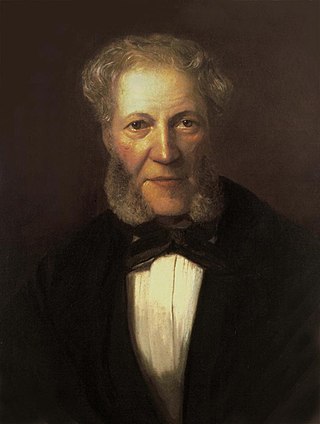
Isaac Ignaz Moscheles was a Bohemian piano virtuoso and composer. He was based initially in London and later at Leipzig, where he joined his friend and sometime pupil Felix Mendelssohn as professor of piano in the Conservatory.
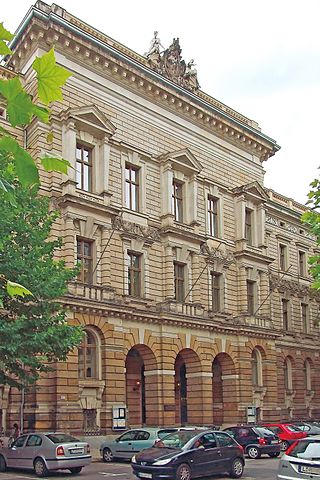
The University of Music and Theatre "Felix Mendelssohn Bartholdy" Leipzig is a public university in Leipzig, Saxony, Germany. Founded in 1843 by Felix Mendelssohn as the Conservatorium der Musik, it is the oldest university school of music in Germany.
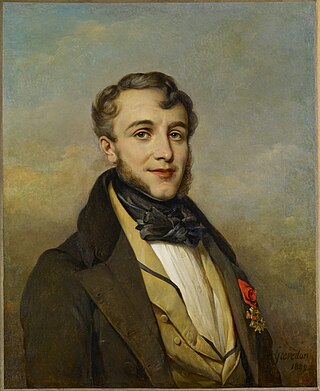
Friedrich Wilhelm Michael Kalkbrenner, also known as Frédéric Kalkbrenner, was a pianist, composer, piano teacher and piano manufacturer. German by birth, Kalkbrenner studied at the Conservatoire de Paris, starting at a young age and eventually settled in Paris, where he lived until his death in 1849. Kalkbrenner composed more than 200 piano works, as well as many piano concertos and operas.
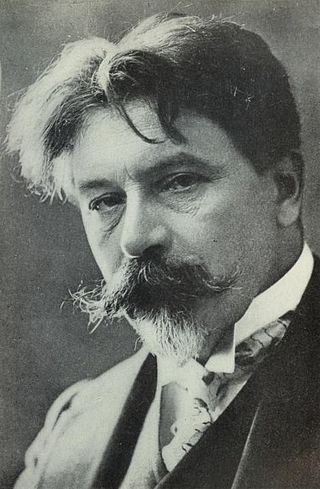
Arthur Nikisch was a Hungarian conductor who performed internationally, holding posts in Boston, London, Leipzig and—most importantly—Berlin. He was considered an outstanding interpreter of the music of Bruckner, Tchaikovsky, Beethoven and Liszt. Johannes Brahms praised Nikisch's performance of his Fourth Symphony as "quite exemplary, it's impossible to hear it any better."

Johann Gottlob Friedrich Wieck was a noted German piano teacher, voice teacher, owner of a piano store, and author of essays and music reviews. He is remembered as the teacher of his daughter, Clara, a child prodigy who was undertaking international concert tours by age eleven and who later married her father's pupil Robert Schumann, in defiance of her father's extreme objections. As Clara Schumann, she became one of the most famous pianists of her time. Another of Wieck's daughters, Marie Wieck, also had a career in music, although not nearly so illustrious as Clara's. Other pupils included Hans von Bülow.
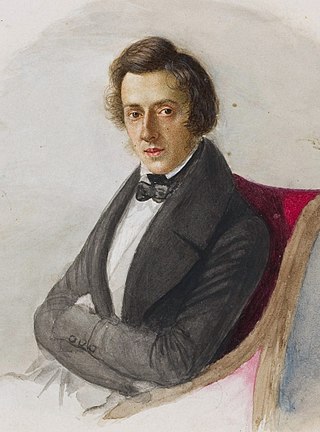
The Études by Frédéric Chopin are three sets of études for the piano published during the 1830s. There are twenty-seven compositions overall, comprising two separate collections of twelve, numbered Op. 10 and Op. 25, and a set of three without opus number.

August Ferdinand Hermann Kretzschmar was a German musicologist and writer, and is considered a founder of hermeneutics in musical interpretation and study.
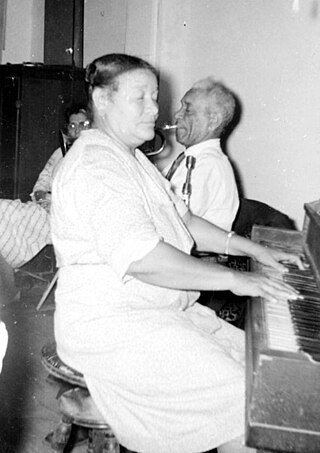
Wilhelmina Madison Goodson, known professionally as Billie Pierce, was an American jazz pianist and singer, who performed and recorded with her husband De De Pierce. Her style has been described as a "potent mixture of barrelhouse, boogie-woogie, and ragtime". After settling in New Orleans in 1930, she played in the bands of A.J. Piron, Alphonse Picou, Emile Barnes, and George Lewis.

Luise Adolpha Le Beau was a German composer of classical music. She studied with noted musicians Clara Schumann and Franz Lachner, but her primary instructor was Josef Gabriel Rheinberger. Like many other 19th century female composers, Le Beau began her career in music as a pianist, and later earned her living teaching, critiquing, and performing music.
José Manuel ("Lico") Jiménez Berroa was a Cuban pianist and composer.
José Julián Jiménez was a Cuban violinist and composer.
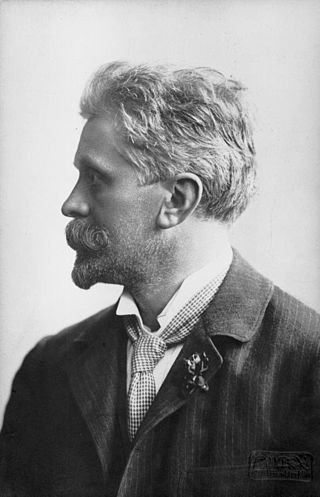
James Kwast was a Dutch-German pianist and renowned teacher of many other notable pianists. He was also a minor composer and editor.

Gisella Grosz, originally Gizella Grosz was a Hungarian classical pianist.
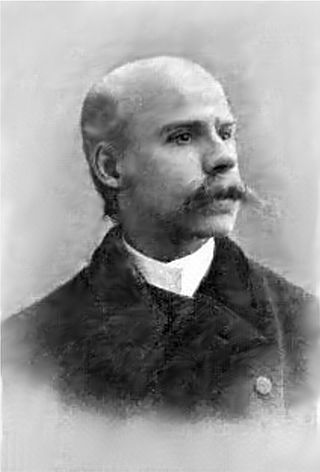
Charles Swinnerton Heap was an English organist, pianist, composer and conductor.

Adele Lewing was a German pianist and composer.
Horst Sannemüller was a German violinist and concertmaster.
Dina Ugorskaja was a Soviet-born German pianist.
{{cite book}}: CS1 maint: multiple names: authors list (link) CS1 maint: numeric names: authors list (link) ![]() Media related to Sara Groenevelt at Wikimedia Commons
Media related to Sara Groenevelt at Wikimedia Commons